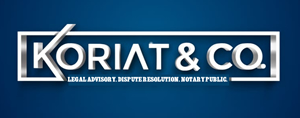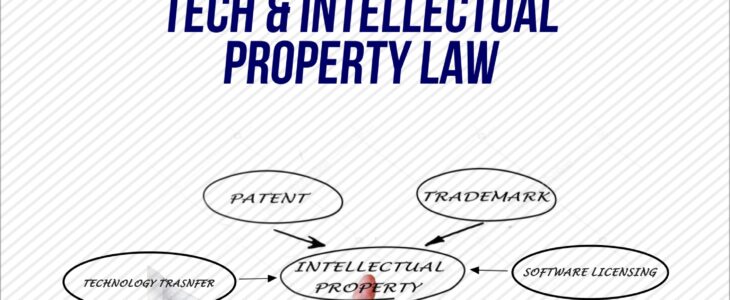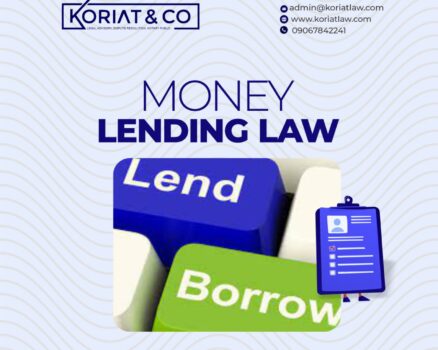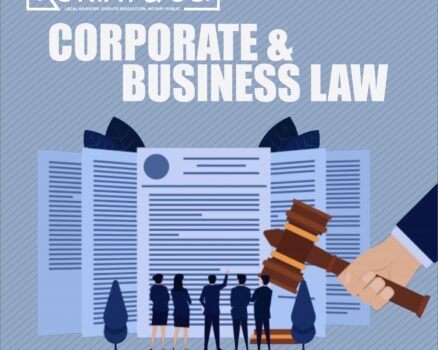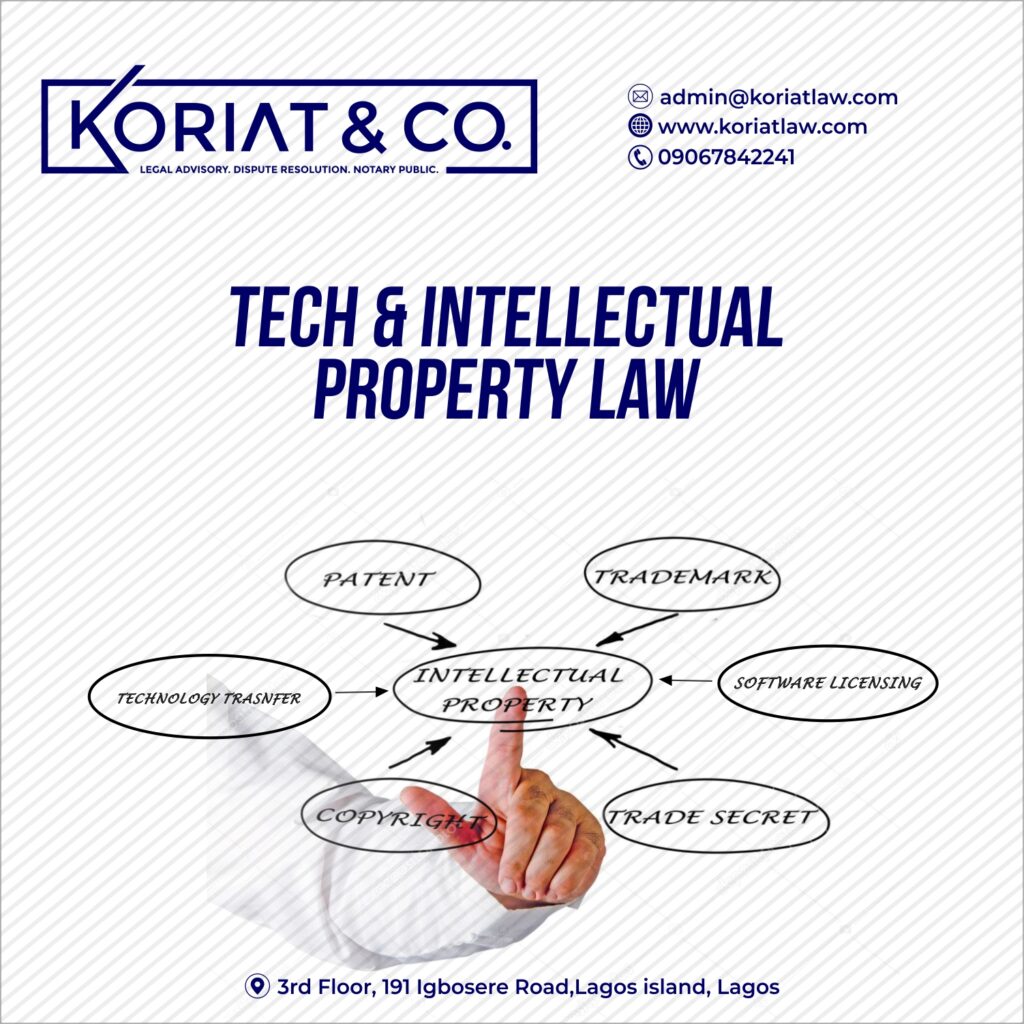
How important is a trademark and why must a trademark be protected?
According to a speaker, “A trademark is a company’s persona and identity in the marketplace”. There is nothing truer. Every aspect of a company’s business or product or service is a mark of its identity, which deserves protection, whether it is registered or not. Do not assume you own the mark until you have successfully registered it. This is so even when the violator is a powerful company or even a Government or its agency.
Recently, it was reported that E-Naira Payment Solutions Limited sued the Central Bank of Nigeria (“CBN”) over “trademark infringement” when the apex bank proposed to launch “E-Naira” as a digital currency for the Nation and the case was speculated as the reason why the CBN had to suspend the scheduled launch of the pilot scheme on 1st October 2021.
A company’s identity is one of its critical assets, built upon its goodwill, i.e. the reputation and sweats of its founders, directors, management and all staff members. In the famous English case of IRC v. Muller Margarine, the House of Lords described “goodwill” as “the benefit and advantage of the good name, reputation and connection of a business. It is the attractive force which brings in custom.”
A registered trademark confers an exclusive right of use and the right to sue any other person for infringement in the event of unauthorized use. However, owners of unregistered mark do not enjoy such rights of exclusivity and protection. Without protection of a trademark, a company or business owner may lose his or her market or competitive relevance to usurpers, violators and other opportunists.
What parts of my business can be trademarked or need trademark protection?
A trademark is any symbol or sign that differentiates the goods or services of your business from another business. This may include the words, name of your company or product, logo of the business, domain name, shape of a product, colour or sound of a product or service – all of which can be registered as trademarks.
Before you register a trademark, it is important to ensure that your trademark is not infringing on any existing trademark.
Please note that the Registrar of Trade Marks reserves the right to request that, for distinctiveness and acceptability for registration, word marks that are Common English words should be registered in combination with devices or logo.
What Government Agency is responsible for registering a trade mark in Nigeria?
The Nigerian Trade Marks, Patent and Designs Registry under the Commercial Department of the Ministry of Trade and Investments in Abuja is responsible for trademark registrations in Nigeria.
What are the requirements for filing a trademark in Nigeria?
The following are the requirements for registering a trademark in Nigeria:
(i). The Applicant’s Details: This entails the full names or corporate name, logo which may include words and/or device, nationality and physical address of the Applicant (or local Attorney) within Nigeria.
(ii). The Trademark Information: This is a clear and distinct representation of the proposed trademark. If the trademark relates to goods, then the full range of goods covered or proposed to be covered by the trademark must be set out and classified in accordance with the International Classification of Goods (See the Classes of Trademarks below).
(iii). Power of Attorney or Authorization of Agent Form: For applications that are presented through an agent or attorney, it is required for a Power of Attorney showing full particulars of name(s), address(es) and nationality of the Applicant(s), full name(s) and capacity of the signatory when the Applicant is a firm or company. This power of attorney or Authorization of Agent Form authorizes the agent to act on behalf of the owner of the trademark. This allows the agent to process the registration of the mark, defend the trademark application against any Oppositions (if any), provide address for local service of documents, and maintain renewals of the marks.
What is a pending trademark?
A pending trademark is a trademark application that has been accepted at the Trade Marks Registry but has not completed the registration process.
What is a Cease and Desist Letter?
A “cease and desist” letter is pre-action notice to a trademark violator notifying the recipient of an infringement upon a trademark, demanding the violator to stop the infringement by a set date and to desist from further infringement.
What is the procedure for registration of a trademark?
There are three (3) stages in trademark registration in Nigeria:
Search/Availability Check Stage: This basically involves status check. An applicant is required to conduct clearance search of the Trademark Registry to ascertain if there is any existing registered trademark. If there is an already registered trademark which is identical with the applicant’s mark, the Registry will refuse the applicant. However, where the search reveals that no identical mark has been previously registered, then an Acknowledgement Letter will be issued to the applicant.
Acceptance of Application Stage: Applicant is expected to submit application for trademark registration. Thereafter, an official Acknowledgment and Acceptance Letter would be issued by the Registry to the applicant. The Acknowledgement Letter Form will reflect the Trade Mark Number (for example, F/TM/2020/04300), the Nigerian Coat of Arm, the Applicant’s names, the date of application, the date the application was received, good or service, the Class(es) under which the mark is registered, the amount paid, the Agent’s name and address, signature and stamp of the Registrar of Trade Marks. The Acceptance Letter is the initial confirmation that a trademark has been approved for registration. The Acceptance Letter Form will inform the Applicant that the application has been accepted and will, in due course, be advertised in the Trade Marks Journal. Every Acceptance Letter Form must refer to the File Number, the Acknowledgment Letter Form, reflect the Applicant’s name, Agent’s name and address, the good or service and the Class of trademark as well as be bear the signature and stamp of the Registrar of Trade Marks.
Publication and Certification Stage: This is the final stage in the process of trademark registration. Every trademark application must be advertised in the Nigerian Trademark Journal. The publication serves as a notice to the public members and invite any objection from anyone with a pre-existing trademark that may or seems to identical with the trademark sought to be registered. If no objection is received within two (2) months or the objection is overruled, the Registrar will issue the Applicant with a certificate of registration. The certificate is issued for each class of trademark registered by the Applicant. The certificate will reflect the date of initial filing as date of application (i.e. date of filing acknowledgment). The Registrar shall constitute a Tribunal to determine the merits of the objection to the application for trademark registration.
What are the important timelines in trademark filing process?
Timeline for Publication and Objections: When a trademark application is advertised in the Nigerian Trademark Journal, an objection may be lodged within two (2) months of the publication.
Timeline for Making Application for Renewal of Trademark Registration: Registered trademarks are valid for seven (7) years but are renewable before expiration. The Application for renewal of registered trademark must be made within three (3) months from the due date.
Timeline for Responding to Opposition: Upon being notified of any received opposition to the application for trade mark registration, the Applicant is required to the opposition with a counter-statement within one (1) month from the date of receipt of such notice from the Registrar. Failure to respond within the prescribed period will be deemed to be an abandonment of the trade mark application.
Timeline for completion of Trademark Registration: Status Check can be done and the result will be ready in 24 hours. The process of trademark registration can be completed within one (1) month.
Is there any implication in registering a trademark colour?
Yes. A mark may be registered as either plain (i.e. black and white) or in colour registration. A plain (or black and white) registration gives a wider range of protection than the registration in colour. Plain registration allows the protection to all colours of presentation of the trade mark.
What is the cost of trademark registration in Nigeria?
The cost trademark registration is not cheap and largely dependent on the number of Classes under which a mark is proposed to be registered. Each Class of trademark attracts same but distinct cost because the Registrar of Trademarks will issue separate certificates for each of the Class of trademark registered.
The cost of search, acknowledgment, acceptance, publication and certification for each Class of Trademarks including out-of-pocket expenses should not exceed N125,000 (One Hundred and Twenty-Five Thousand Naira), excluding lawyer’s professional fees. The foregoing cost may be multiplied by the number of Classes of Trademark sought to be registered.
With regards to lawyers’ professional fees, this will be based on the class of lawyer to be engaged and whether such engagement is based on hourly rates or flat fee or whether it is a new instruction or there is an existing working relationship between the owner of the mark and the lawyer.
What is the lifespan of a registered trademark in Nigeria?
Registered trademarks in Nigeria have an initial validity period of seven (7) years, and are, thereafter, indefinitely renewable for period of fourteen (14) years on each occasion. Application for renewal of trademark registration must be made three (3) months before the expiration of the lifespan.
What happens if someone has previously registered my company’s trademark?
It would be advisable to sue the owner of the registered mark and Registrar of Trademarks.
Please note that application for registration of a trademark may be refused by the Registrar of Trademarks if the mark sought to be registered conflicts with an already registered mark. The Registrar may refuse to register a similar mark even if the application to register a similar or identical mark is pending until the applicants’ rights are determined by Court. See Wellcome Foundation & Anor v. Ranbaxy Montari Ltd.
A successful party will be granted an order directing the Registrar to register his trademark.
How do I determine what class of trademark to register my business mark or sign?
This is where the help of a trademark lawyer will be needed. Trademarks have different classifications in Nigeria, as it is in several other jurisdictions across the globe. The uniform classification of trademarks stemmed from the Nice Agreement 1957 which birthed the International Classification of Goods and Services (“Nice Classification”).
Under the Nice Classification, similar goods and services are grouped together into 45 different classes. Goods are listed in Classes 1 to 34 while Services are listed in Classes 35 to 45.
Please note that an applicant for trademark registration may choose to register a trademark in more than one class at an extra filing cost; each class attracts separate filing costs and will be issued separate Acknowledgement Letters and Certificates of Registration in accordance with the number of classes under which a mark has been registered.
Below is the list of classes and how to determine where a company’s product or service falls:
CLASSIFICATION OF GOODS: CLASSES 1 – 34
Class 1: All chemical products used in industry, science and photography, including agriculture, horticulture and forestry; unrefined synthetic or artificial resins, unrefined plastics; manures; fire extinguishing compositions; tempering and soldering preparations; chemical components for saving foodstuffs; tanning substances; adhesives used in industry; unrefined plastics in the form of liquids, chips or granules.
Class 2: Paints, varnishes, lacquers; preservatives against rust and against deterioration of wood; colorants; mordants; raw natural resins; metals in foil and powder form for painters, decorators, printers and artists.
Class 3: Bleaching preparations and other substances for laundry use; cleaning, polishing, scouring and abrasive preparations; soaps; perfumery, essential oils, cosmetics, hair lotions; dentifrices.
Class 4: Industrial oils and greases; lubricants; dust absorbing, wetting and binding compositions; fuels and illuminants; candles and wicks for lighting; combustible fuels, electricity and scented candles.
Class 5: Pharmaceutical and veterinary preparations; sterile drugs for clinical purposes; dietetic food and substances adapted for medical or veterinary use, meal for babies; dietary supplements for humans and animals; plasters, materials for dressings; material for stopping teeth, dental wax; disinfectants; preparations for destroying vermin; fungicides, herbicides.
Class 6: Common material and their combinations; metal building materials; transportable buildings of metal; materials of metal for railway tracks; non-electric cables and wires of common metal; ironmongery, small items of metal hardware; pipes and tubes of metal; safes; goods of common metal not included in other classes; ores; unwrought and partly wrought common metals; metallic windows and doors; metallic frame conservatories.
Class 7: Machines and machine tools; motors and engines (except for land vehicles); machine coupling and transmission components (except for land vehicles); agricultural implements other than hand-operated; incubators for eggs; automatic vending machines.
Class 8: Hand tools and hand operated implements; cutlery; side arms; razors; electric razors and hair cutters.
Class 9: Scientific, nautical, surveying, photographic, cinematographic, optical, weighing, measuring, signalling, checking (supervision), life-saving and teaching apparatus and instruments; apparatus and instruments for conducting, switching, transforming, accumulating, regulating or controlling electricity; apparatus for recording, transmission or reproduction of sound or images; magnetic data carriers, recording discs; compact discs, DVDs and other digital recording media; mechanisms for coin-operated apparatus; cash registers, calculating machines, data processing equipment, computers; computer software; fire-extinguishing apparatus.
Class 10: Surgical, medical, dental and veterinary apparatus and instruments, artificial limbs, eyes and teeth; orthopedic articles; suture materials; sex aids; massage apparatus; supportive bandages; furniture adapted for medical use.
Class 11: Apparatus for lighting, heating, steam generating, cooking, refrigerating, drying, ventilating, water supply and sanitary purposes; air conditioning apparatus; electric kettles; gas and electric cookers; vehicle lights and vehicle air conditioning units.
Class 12: Vehicles; apparatus for locomotion by land, air or water; wheelchairs; motors and machines for land vehicles; vehicle body parts and transmissions.
Class 13: Firearms; ammunition and projectiles, explosives; fireworks.
Class 14: Precious metals and their alloys; jewelry, costume jewelry, precious stones; horological and chronometric instruments, clocks and watches.
Class 15: Musical instruments; stands and cases adapted for musical instruments.
Class 16: Paper, cardboard and goods made from these materials, not included in other classes; printed matter; bookbinding material; photos; stationery; adhesives for stationery or home purposes; artists’ materials; paint brushes; typewriters and office requisites (except furniture); instructional and educational material (except apparatus); plastic materials for packaging (not included in other classes); printers’ type; printing blocks.
Class 17: Rubber, gutta-percha, gum, asbestos, mica and goods made from these materials; plastics in extruded form for use in manufacture; semi-finished plastic materials for use in further manufacture; stopping and insulating materials; flexible non-metallic pipes.
Class 18: Leather and imitations of leather; animal skins, hides; trunks and travelling bags; handbags, rucksacks, purses; umbrellas, parasols and walking sticks; whips, harness and saddlery; clothing for animals.
Class 19: Non-metallic structure stuff; nonmetallic rigid pipes for building; asphalt, pitch and bitumen; non-metallic transportable buildings; non-metallic monuments; non-metallic framed greenhouses, doors and windows.
Class 20: Furniture, mirrors, picture frames; articles made of wood, cork, reed, cane, wicker, horn, bone, ivory, whalebone, shell, amber, mother-of-pearl, meerschaum or plastic which are not included in other classes; garden furniture; pillows and cushions.
Class 21: Household or kitchen tools and vessels; combs and sponges; brushes; brush-making materials; articles for cleaning purposes; steel wool; articles made of ceramics, glass, porcelain or earthenware which are not included in other classes; electric and non-electric toothbrushes.
Class 22: Ropes, string, nets, tents, ceilings, covers, tarpaulins, sails, sacks for transporting bulk materials; padding and stuffing materials which are not made of rubber or plastics; raw fibrous textile materials.
Class 23: Yarns and wear, for cloth use.
Class 24: Fabrics and fabric goods; bed and table cover; travelers’ rugs, textiles for making articles of clothing; duvets; covers for pillows, cushions or duvets.
Class 25: Clothing, footwear, headgear.
Class 26: Lace and embroidery, ribbons and braid; buttons, hooks and eyes, pins and needles; artificial flowers.
Class 27: Carpets, rugs, mats and matting, linoleum and other materials for covering existing floors; wall hangings (non-textile); wallpaper.
Class 28: Games and playthings; playing cards; gymnastic and sporting articles; decorations for Christmas trees; children’s’ toy bicycles.
Class 29: Meat, fish, poultry and game; meat extracts; preserved, dried and cooked fruits and vegetables; jellies, jams, compotes; eggs, milk and milk products; edible oils and fats; prepared meals; soups and potato crisps.
Class 30: Coffee, tea, cocoa, sugar, rice, tapioca, sago, artificial coffee; flour and preparations made from cereals, bread, sweetmeat and confectionery, ices; honey, treacle; yeast, baking-powder; salt, mustard; vinegar, sauces (condiments); spices; ice; sandwiches; prepared meals; pizzas, pies and pasta dishes.
Class 31: Agricultural, horticultural and forestry products; live animals; fresh fruits and vegetables, seeds, natural plants and flowers; foodstuffs for animals; malt; food and beverages for animals.
Class 32: Beers; mineral and aerated waters; nonalcoholic drinks; fruit drinks and fruit juices; syrups for making beverages; shandy, dealcoholised drinks, non-alcoholic beers and wines.
Class 33: Alcoholic wines; spirits and liqueurs; alcopops; alcoholic cocktails.
Class 34: Tobacco; smokers’ articles; matches; lighters for smokers schemes; advertising services provided via the Internet; production of television and radio advertisements; accountancy; auctioneering; trade fairs; opinion polling; data processing; provision of business information; retail services connected with the transaction of goods.
CLASSIFICATION OF SERVICES: CLASSES 35 – 45
Class 35: Advertising; business regulation; business administration; office functions; electronic data storage; organisation, operation and supervision of loyalty and incentive.
Class 36: Insurance; monetary services; real estate agency services; building society services; banking; stockbroking; financial services provided via the Internet; issuing of tokens of value in relation to bonus and faithfulness schemes; provision of monetary information.
Class 37: Building construction; repair; installation services; installation, maintenance and repair of computer hardware; painting and decorating; cleaning services.
Class 38: Telecommunications services; chat room services; portal services; e-mail services; providing user access to the Internet; radio and television broadcasting.
Transport; packaging and storage of goods; travel arrangement;
Class 39: distribution of electricity; travel information; provision of machine parking complexes.
Class 40: Treatment of materials; development, duplicating and printing of photographs; generation of electricity.
Class 41: Education; providing of training; entertainment; sporting and cultural activities.
Class 42: Scientific and technological services and research and design relating thereto; industrial analysis and research services; layout and development of computer hardware and software; computer programming; installation, maintenance and repair of computer software; computer consultancy services; design, drawing and commissioned writing for the compilation of websites; creating, maintaining and hosting the websites of others; design services.
Class 43: Services for providing food and drink; temporary accommodation; restaurant, bar and catering services; provision of holiday accommodation; booking and reservation services for restaurants and holiday accommodation; retirement home services; nursery services.
Class 44: Medical services; veterinary services; hygienic and beauty care for human beings or animals; agriculture, horticulture and forestry services; dentistry services; medical analysis for the diagnosis and treatment of persons; drug store; garden design services.
Class 45: Legal services; conveyancing services; security services for the protection of property and individuals; social work services; consultancy services relating to health and safety; consultancy services relating to personal appearance; provision of personal tarot readings; dating services; funeral services and undertaking services; fire-fighting services; detective agency services.
Please Note that the above classification of goods and services is constantly evolving, as more changes are expectedly made to the various classes from time to time.
About KORIAT & CO.
We are a growing commercial law firm in Lagos and Abuja. The above article is not legal advice and does not automatically make our readers our clients unless they specifically instruct us to act or represent them in any way.
Please contact Koriat & Co. through admin@koriatlaw.com or 09067842241 if you require additional information about or assistance in making the application for registration of trademarks in Nigeria.
